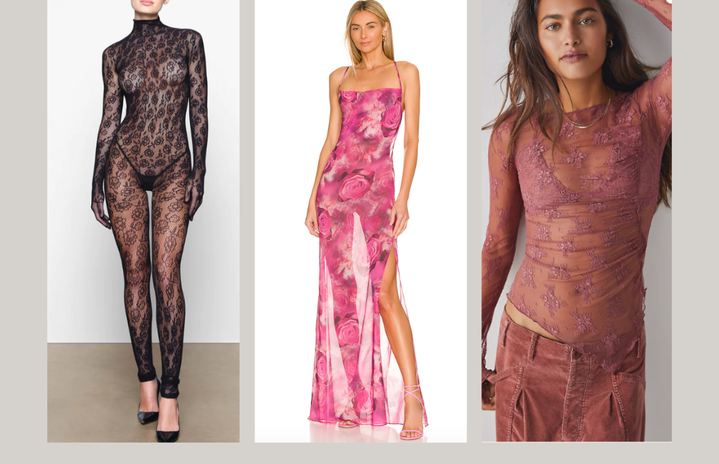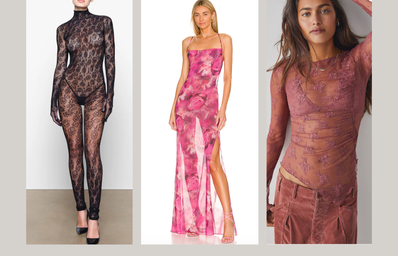When we walk into any kind of workplace, we see people with different personalities, body shapes, and sizes. Then, why it is that within the fashion industry, we only find predominantly white and skinny models even after so many decades of the industry’s foundation? Among all the fashion trends and aesthetics, there’s one trait that has always stayed and been a prerequisite to being considered fashionable: skinniness. This is evident even in non-white countries where fashion shows mostly have thin and fair-skinned models for their ramp walks, proving that European beauty standards are not something only white countries are affected by. These standards, instead, have become the norm.
Skinniness is no longer just a trait in models, it is an aesthetic. It is also a requirement for someone who wants to indulge in fashion trends such as Y2k, Cottage core and e-girl among others. Almost all of these focus more on the physique of the person wearing them rather than the design itself. When Y2k fashion made a comeback in 2020, some people began creating videos of them trying on trending fashion outfits. These were usually called ‘is it an outfit or is she just skinny?’ and went on to establish that some clothes would be considered good simply for being worn by a skinny woman and non-cis men. Plus sized individuals, on the other hand, would and continue to get shamed for wearing the same clothes, be it Y2k, swimwear, street fashion, oversized outfits or anything else.
Some fashion trends look like they are made to celebrate skinny bodies only. An example of that includes oversized clothes which are appreciated more when worn by thin women and femme presenting individuals — we know they’re actually skinny even if they are in oversized clothes, so it’s all good and the trend is safe. The lack of representation of diverse body types, ethnicities, especially natural bodies, quite often causes body image issues among both young and grown women and non-cis men. When there’s no representation, the viewers feel like altering their bodies to match the popularised visuals. This can lead them to develop eating disorders and undergo plastic surgeries to gain a skinny body. There is even a ‘skinny enough’ challenge going on in China causing these issues among women with normal bodies.
The notion of skinny bodies being ideal has, over the years, also been propagated by the lingerie brand Victoria Secret. When the Chief Marketing Officer of the company was asked why their brand doesn’t cater to plus sizes, he stated that “the brand has a specific image, has a point of view. It has a history.” He went on to explain that Victoria’s Secret is about fantasy, not inclusivity, political correctness, or pleasing pesky reporters.
The ‘skinny aesthetic’ had plagued Tumblr in the 2000s when the platform had various communities where people counted calories, posted photoshopped pictures of themselves, posted skinny people’s pictures as inspiration, and pushed each other to get skinny through negative comments.
The most recent body shape since 2018 that started trending is the “hourglass” body shape because we cannot live without skinniness — even if you have fat on the upper and lower parts of your body, your waist should remain to be abnormally small. Another body type that started trending was ‘thicc’ bodies, which are mostly skinny girls with a little bit of fat on the butt or people getting the Brazilian Butt lift (BBL). This trend too never actually included naturally thick women.
When being skinny becomes a fashion trend or an aesthetic, clothes are designed, manufactured and marketed on a large scale for this particular trend. The clothes, thus, are only available for thin people with plus size individuals not having access to trending outfits. When we see these designs and want to wear them, we think of shrinking ourselves to fit into them because they can’t go a size up. However, it is important to understand that we shouldn’t shrink ourselves to fit into clothes, the clothes should be made to fit us instead.
Women and queer individuals can also not be blamed for wanting to be skinny when the fatphobic society has always admired thinness the most in media and in real life. Fitting into a construct that is appreciated by society certainly makes life easier. Plus-size women and queer people, on the other hand, don’t just face ridicule in the fashion industry, they face it on a day-to-day basis in the form of unwanted comments on their bodies, bullying, harassment, ignorance by medical professionals and wrong diagnoses, online trolling and much more. While skinny bodies are celebrated, non-skinny ones aren’t even tolerated.
The roots of the skinny propaganda lie in white supremacy. But why should people of colour alter their faces and bodies to look like white women? Why can’t plus-size individuals exist healthily (or even unhealthily) in peace? Why should someone’s body shape be a standard to judge a person by? When it comes to skinny people, their attractiveness makes others assume the good in them. However, plus-size people are seen to be lazy, stupid, and promoters of obesity just for existing in their own bodies.
The solution, of course, is inclusion of people from diverse backgrounds in the fashion industry, in media, and on social media. These platforms need to stop pushing the content of conventionally attractive creators. Furthermore, movies and shows need more representation of different body types instead of creating stories about the “skinny woman” getting the love of her life and success. In real life, we need to engage with people who are not celebrated in media, who actually suffer because of fatphobia. We must accept people the way they are; not as some ‘before’ picture of a transformation, not as a cautionary tale, just as fellow human beings.

